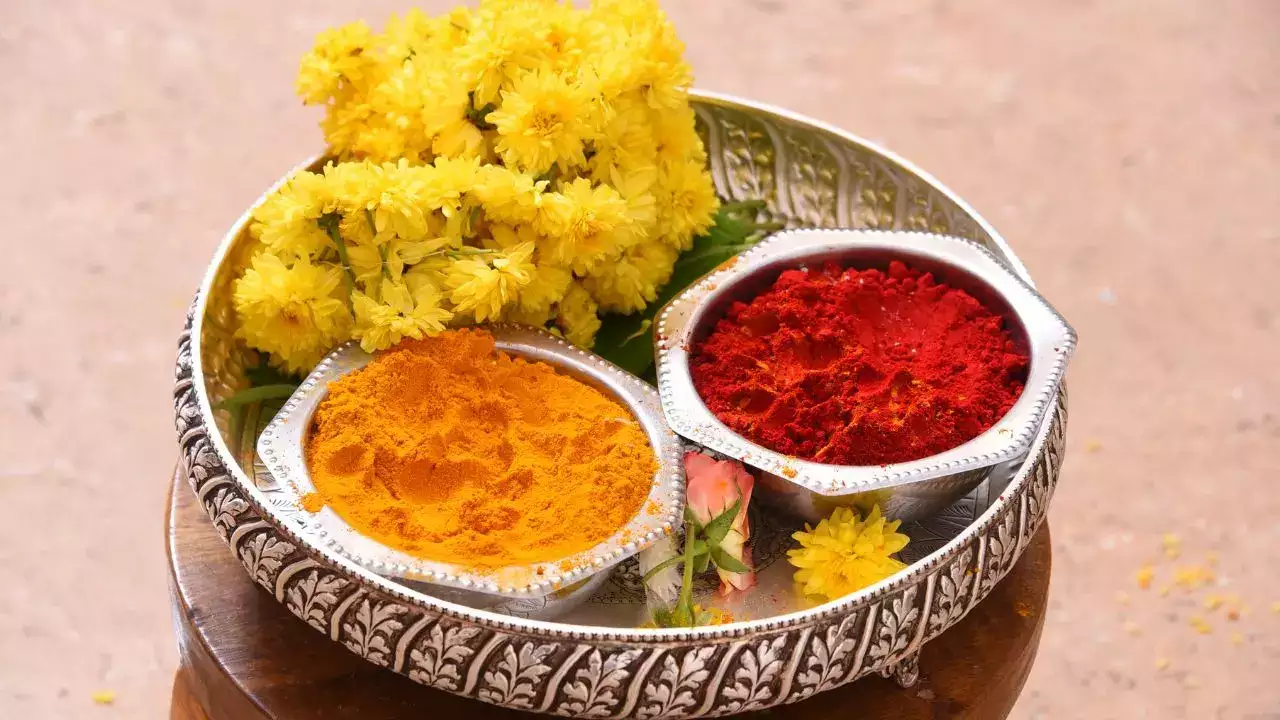Kerala, with its deep roots in Hindu traditions, was recently a place of desecration of Hindu rituals. In a shocking act of disrespect and religious insensitivity, Muslim influencer Maheen videographed himself applying sindoor to four foreign women inside the sacred Sree Durga Bhadra Devi Temple in Thodupuzha, Kerala.
What may appear as a playful “social media moment” was, in fact, a blatant violation of a sacred Hindu marital tradition.
This mockery was executed knowingly by a man who lives in a country where 79% of the population is Hindu. Would any other community tolerate such disrespect of their religious customs? Maheen glorifies gun touting Jihad or Taliban on his instagram channel and wants to promote “secularim” in Hindu Dharma!
Sindoor: A Sacred Symbol, Not Social Media Content
Sindoor is not makeup. It’s not a party prop. It’s a sacred mark of marital status for Hindu women. Sindoor Daan is a cherished ritual within the Hindu marriage ceremony. Applying Sindoor is an act filled with emotion, cultural depth, and spiritual gravity. No man has the religious or cultural right to fill the maang of a woman with sindoor.

To fill a hair parting with Sindoor, especially inside a temple, is equivalent to performing a mock marriage.

In certain temples, a pujari may offer sindoor as aashirwad – but only to women already wearing it, symbolically blessing their existing marital bond. This gesture is never directed toward unmarried women or strangers. And it is certainly not by random male visitors or guides seeking cheap thrills and viral content.
Intent Was Not Ignorance of Dharma – It Was Insult to Sindoor

Maheen is not an outsider to Indian culture. He’s not a clueless foreigner who stumbled upon a red powder and assumed it was face paint. He is an Indian influencer, well aware of the deep spiritual and cultural significance of Sindoor. And yet, he chose to sensationalize a sacred Hindu ritual by applying sindoor to the empty partings of foreign women. None of these women are Hindu and they do not understand the meaning behind the act.
None of these foreigners gave informed consent to participate in a religious ritual meant only for married Hindu women.
Thus, Maheen’s act of applying sindoor to these women was not innocent. This was a deliberate deception of the women on sacred Hindu temple grounds. The man was well aware of what he was doing and how he was using his guests in the desecration of a holy Hindu ritual. He captioned his reel with the following content –
“Muslim boy in a Kerala temple: In Kerala, faith isn’t a barrier—it’s a bridge. Here, in this lush corner of India, religious harmony isn’t just an idea—it’s lived every day.
We respect. We celebrate. We share. Different paths, one love.”
Sharing Love? Religous Harmony? In what way was Maheen celebrating Hindu Dharma by applying Sindoor to foregin women – almost declaring them his concubines!
A One-Way Street of Tolerance?
Let’s ask the uncomfortable but necessary questions:

Would a Hindu influencer survive the backlash if he publicly mocked Islamic traditions at a Masjid for views?
The answer is a resounding no.
There would be protests, threats, calls for arrest, and chants of STSJ – and the influencer would be branded an Islamophobe. So why is Hindu sentiment fair game for mockery by Muslims? Why do Sanatana rituals become content for clickbait, open for trivialization by those who wouldn’t dare do the same to their own traditions?

Would a Hindu influencer be entertained for using a Gurudwara for reels while mocking its parikrama?
The answer is a resounding no.
The SGPC would throw out the influencer and probably file a police case. The Sikh community would raise a hue and cry – demanding an apology. And the Kahlistanis would turn it into an act of political debate. So, why are Hindus asked to be tolerant when “peacefuls” mock Dharma?
Apology Needed: My Sindoor Is Not Your Prop

The bare minimum Maheen can do is issue a public apology. He needs to atone – not just for applying Sindoor to four unmarried women at a temple. Instead, he needs to apologize for knowingly mocking a religious act that millions of Hindu women perform with reverence and devotion for viral reels.
This is not about “taking offense” – this is about demanding respect!
Hindu culture is endlessly tolerant, yet constantly tested but “peacefuls.” When temple spaces become a social media circus – Sanatanis should react. And when the sacred Sindoor becomes a spectacle, it’s time to push back.


